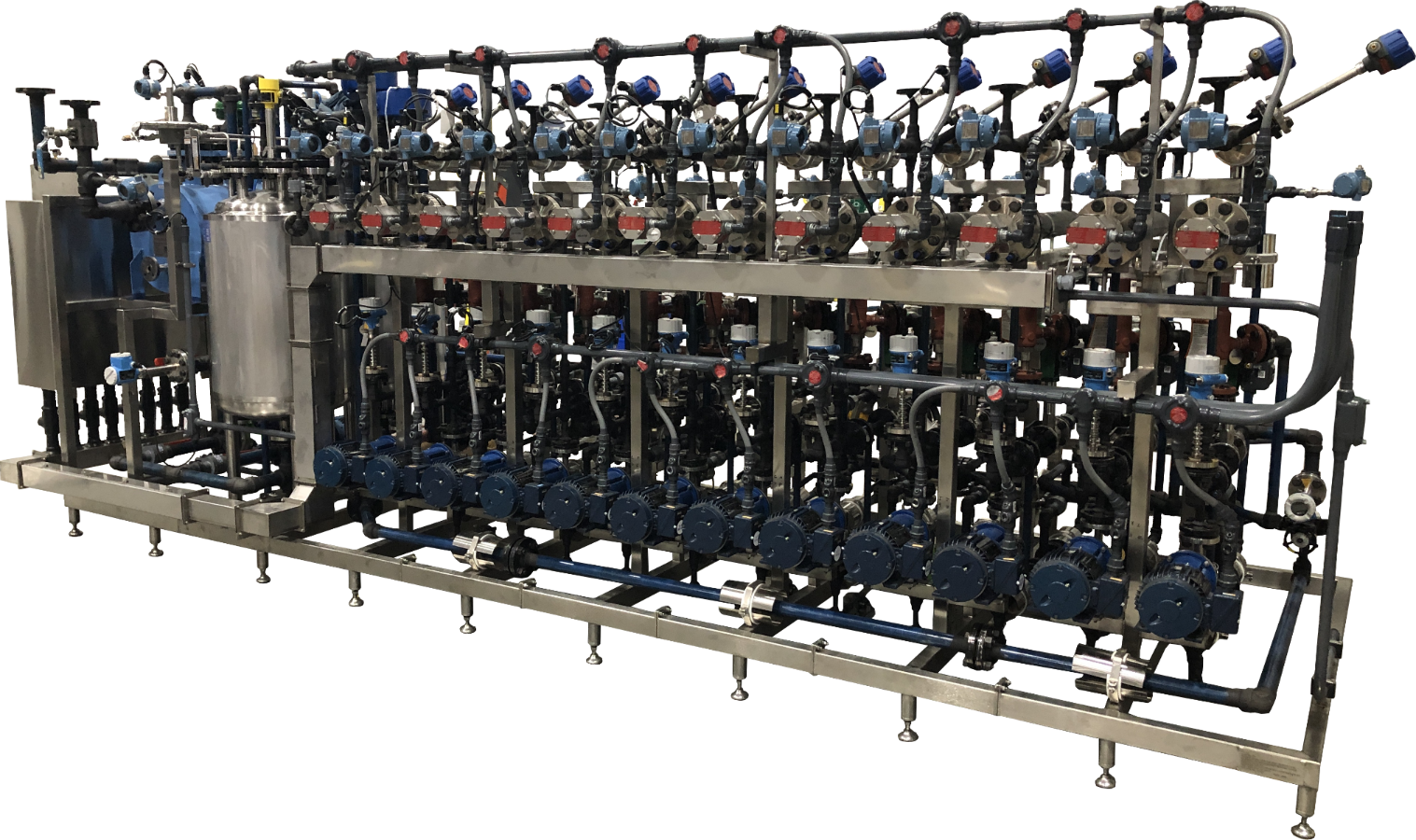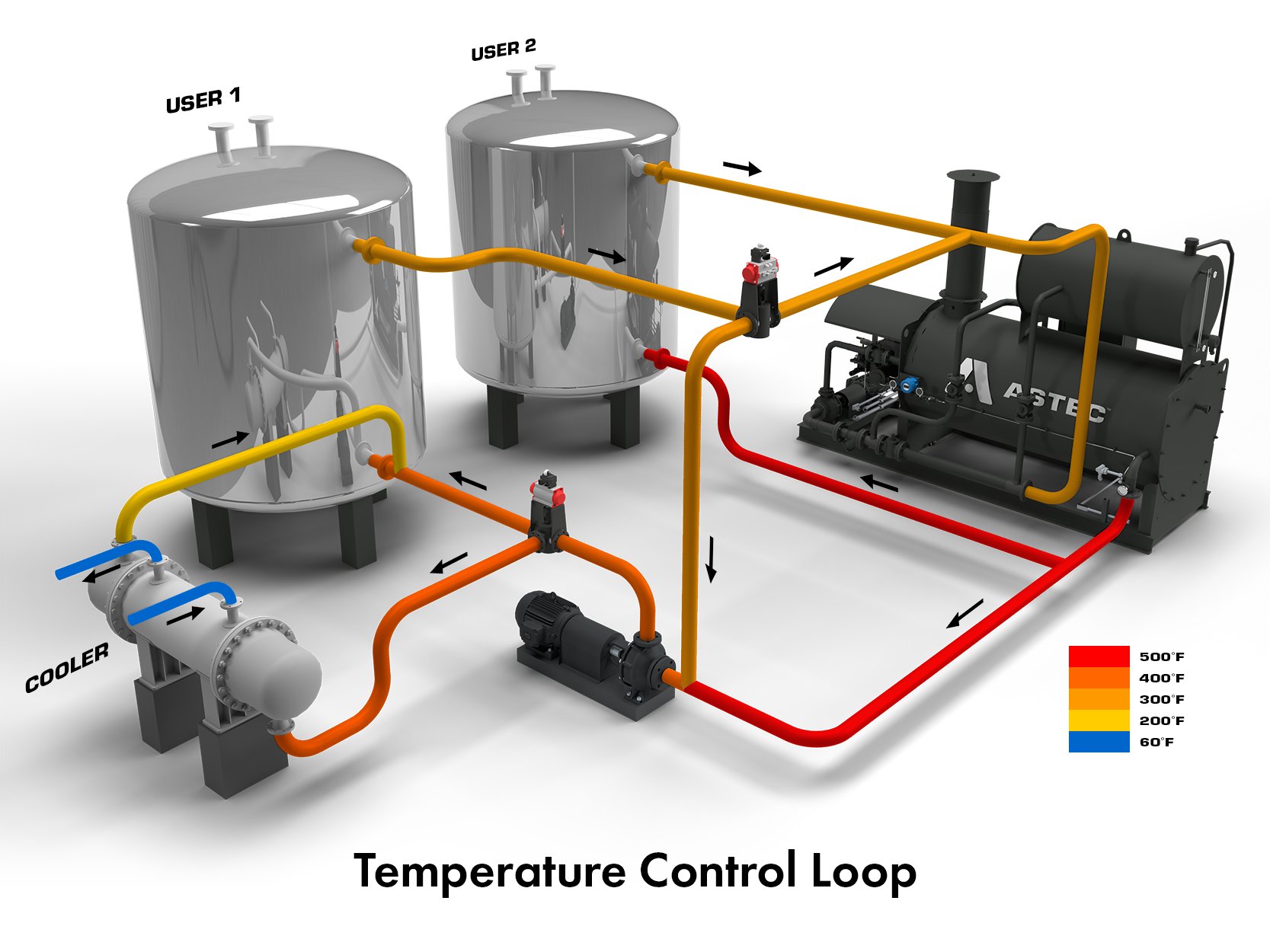Technologies in Heat Transfer Systems: What You Required to Know for Optimal Performance
Developments in Heat transfer systems are transforming performance throughout numerous industries. Advanced products like graphene and nanofluids promise significant enhancements in thermal conductivity. The combination of IoT and device discovering uses opportunities for real-time surveillance and improved energy performance. The landscape of thermal administration is swiftly advancing. Recognizing these advancements is essential for accomplishing excellent system performance and sustainability in the future. What specific innovations are forming this change?
Emerging Materials for Improved Heat Transfer

Advanced Heat Exchanger Layouts
While typical Heat exchangers have actually offered their function in different applications, advanced styles are now arising to meet the enhancing demands for efficiency and efficiency. These innovative layouts, such as plate, shell-and-tube, and finned-tube Heat exchangers, incorporate improved surface and improved circulation patterns to enhance thermal transfer prices. In enhancement, compact layouts permit for decreased room requirements without jeopardizing efficiency. Advanced materials, such as composites and corrosion-resistant alloys, additionally enhance resilience and performance under severe conditions. Simulation modern technologies and computational fluid dynamics are increasingly employed to fine-tune these layouts, making certain peak Heat transfer attributes. As sectors look for to decrease energy usage and make best use of outcome, the adoption of advanced Heat exchanger styles is crucial in accomplishing these objectives.
The Function of Nanotechnology in Heat Transfer
Nanotechnology plays an essential role in improving thermal conductivity within Heat transfer systems. By controling materials at the nanoscale, researchers have attained considerable improvements in power effectiveness. These developments not only maximize performance however also add to more lasting power services.
Enhanced Thermal Conductivity
Considerable innovations in thermal conductivity have emerged with the application of nanotechnology, changing Heat transfer systems throughout numerous industries. By including nanoparticles into Heat transfer liquids and materials, scientists have attained remarkable boosts in thermal conductivity. These nanoparticles, such as carbon nanotubes, graphene, and steel oxides, enhance the Heat transfer buildings due to their high area and distinct thermal attributes. The resulting composites show improved performance in applications ranging from electronics cooling down systems to sustainable power technologies. In addition, the capacity to customize the size, form, and composition of nanoparticles permits for enhanced thermal management options. As an outcome, nanotechnology remains to play an essential duty in the growth of extra efficient and effective Heat transfer systems, paving the method for improved industrial applications.
Power Effectiveness Improvements

Assimilation of IoT in Heat Transfer Equipments
The integration of IoT in Heat transfer systems presents the implementation of smart sensing units that improve operational efficiency. These sensing units allow real-time data surveillance, permitting for immediate changes and optimizations. This technical innovation has the potential to considerably boost efficiency and energy administration in Heat transfer applications.
Smart Sensors Execution
As Heat transfer systems advance, the combination of wise sensors through the Web of Points (IoT) has become a transformative method. These sensors enable real-time surveillance of stress, temperature level, and flow prices, enhancing system efficiency and dependability. By gathering and sending data, they help with aggressive maintenance, decreasing the risk of system failings. In addition, smart sensing units add to power financial savings by refining operational parameters based upon ecological problems. Their capacity to analyze fads and anomalies enables for informed decision-making, ensuring peak performance of Heat transfer systems. As markets increasingly adopt this innovation, the application of smart sensors stands to transform how Heat transfer systems are taken care of, leading the means for greater sustainability and improved efficiency index end results.
Real-Time Data Tracking
How can real-time data monitoring enhance the effectiveness of Heat transfer systems? By incorporating Internet of Points (IoT) innovation, Heat transfer systems can take advantage of continual information collection from clever sensing units. This real-time tracking enables immediate analysis of flow, pressure, and temperature rates, allowing operators to recognize inefficiencies immediately. Modifications can be made to enhance efficiency, reduce power consumption, and prolong tools lifespan. Additionally, anticipating upkeep can be executed, decreasing unanticipated downtime and expensive repairs. The ability to picture performance find here metrics via dashboards improves decision-making, fostering a positive strategy to system administration. Inevitably, real-time information checking not only enhances operational performance yet likewise contributes to sustainability objectives within industrial processes.
Energy Effectiveness and Sustainability Trends
Power performance and sustainability trends are reshaping the landscape of Heat transfer systems, driving development and compliance throughout numerous sectors. Organizations are significantly prioritizing energy-efficient layouts to reduce operational costs and reduce ecological effects. The combination of renewable energy resources is becoming much more widespread, allowing Heat transfer systems to run sustainably while fulfilling governing demands. Additionally, improvements in materials and modern technologies promote reduced energy usage and boost general efficiency. Lifecycle assessments are also gaining traction, enabling companies to examine the environmental impact of Heat transfer systems from manufacturing to disposal. This focus on sustainability not only supports company duty but additionally placements organizations competitively in a market where customers progressively favor eco-friendly remedies. Energy effectiveness and sustainability remain vital factors to consider for future growths in Heat transfer technology.
Technologies in Thermal Administration Solutions
While the demand for effective Heat transfer remains to climb, innovations in thermal management services are emerging to resolve both performance and sustainability obstacles. Advanced products, such as phase change materials and nanofluids, are being developed to boost Heat transfer performance - DVS Heat Transfer Systems. These materials improve thermal conductivity and enable for much better temperature level policy in numerous applications. Furthermore, technologies like energetic thermal control systems are gaining traction, making it possible for real-time changes to take care of Heat flow effectively. These systems contribute to energy savings and minimize the environmental effect of thermal procedures. The integration of IoT in thermal monitoring promotes tracking and predictive maintenance, making sure enhanced performance and longevity of Heat transfer systems. On the whole, these developments represent significant strides toward more sustainable thermal administration practices
Future Instructions in Heat Transfer Modern Technology
Arising developments in thermal management remedies signal an encouraging future for Heat transfer modern technology. Researchers are increasingly concentrating on establishing materials with exceptional thermal conductivity and boosted energy efficiency. Developments such as nanofluids, which consist of put on hold nanoparticles, supply considerable improvements in Heat transfer efficiency. Furthermore, the integration of clever products that adjust to varying temperature level problems is obtaining grip, permitting even more receptive and reliable systems. The rise of additive manufacturing strategies is additionally allowing the style of intricate Heat exchanger geometries that maximize liquid circulation. Moreover, the execution of artificial intelligence formulas is expected to reinvent the optimization of Heat transfer systems, promoting anticipating maintenance and efficiency enhancement. Collectively, these improvements are positioned to transform the landscape of Heat transfer technologies in various industries.

Often Asked Questions

Just how Do I Select the Right Heat Transfer System for My Application?
Choosing the ideal Heat transfer system includes assessing application needs, including temperature arrays, fluid properties, and efficiency requirements. Evaluating system types, maintenance considerations, and cost-effectiveness also plays a vital duty in making a notified choice.
What Are the Upkeep Needs for Advanced Heat Exchangers?
Upkeep requirements for advanced Heat exchangers typically include routine inspections, checking for leakages, cleansing of surface areas, and assuring optimal flow prices. Abiding by supplier standards guarantees reliable operation and prolongs the devices's life expectancy.
Just How Do Ecological Factors Influence Heat Transfer Efficiency?
Ecological aspects significantly influence Heat transfer effectiveness. Variants in temperature, humidity, and air visit their website flow effect thermal conductivity and convective Heat transfer, ultimately influencing system performance and necessitating consideration throughout the design and operation of Heat transfer systems.
What Safety And Security Criteria Apply to Heat Transfer Equipments?
Security requirements for Heat transfer systems usually consist of guidelines from organizations such as ASME and ASTM. DVS Heat Transfer Systems. These standards address materials, style, and functional techniques to guarantee dependability, effectiveness, and protection versus hazards in different applications
Just How Can I Repair Common Heat Transfer System Issues?
Fixing typical Heat transfer system problems entails examining for leaks, making certain proper liquid circulation, checking insulation stability, and validating temperature level differentials. Determining these elements can help keep system performance and avoid more issues.
Nanotechnology plays an essential role in boosting thermal conductivity within Heat transfer systems. Significant improvements in thermal conductivity have arised via the application of nanotechnology, reinventing Heat transfer systems throughout different markets. Improvements in thermal conductivity with nanotechnology have actually led the way for exceptional enhancements in energy effectiveness within Heat transfer systems. Power effectiveness and sustainability fads are improving the landscape of Heat transfer systems, driving innovation and conformity across different markets. The combination of IoT in thermal administration promotes tracking and predictive maintenance, ensuring maximized efficiency and long life of Heat transfer systems.